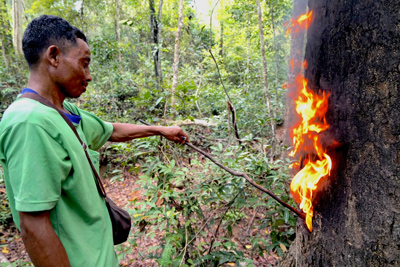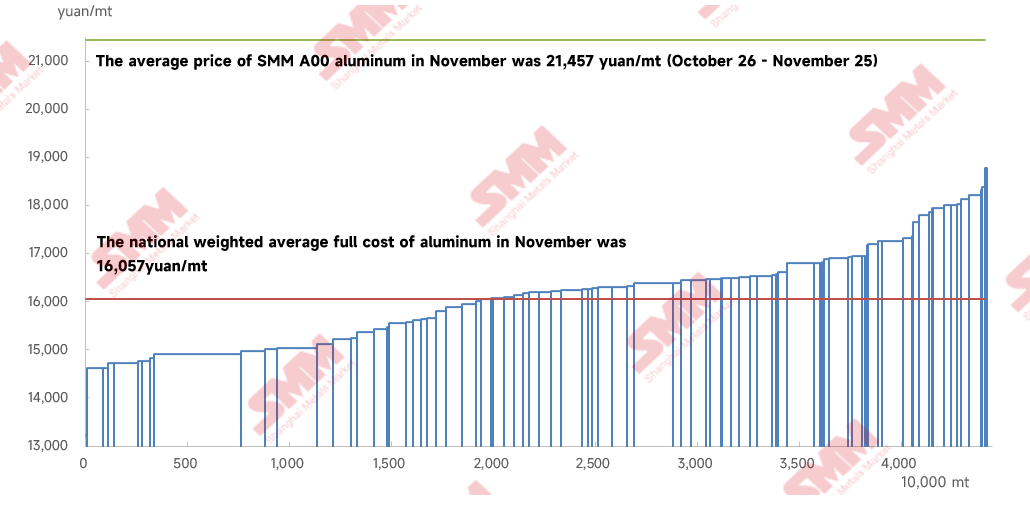Illegal logging in Cambodia poses danger to forest defenders – University of Nevada, Reno

Report on Illegal Logging in Cambodia and its Conflict with Sustainable Development Goals
Illegal logging operations in Cambodia’s protected forests, including the Preah Roka and Prey Lang Wildlife Sanctuaries, present a significant threat to environmental sustainability, community livelihoods, and the nation’s progress towards the United Nations Sustainable Development Goals (SDGs). This report details the scale of deforestation, its impact on Indigenous communities, and the systemic challenges hindering conservation efforts, with a focus on SDG 1 (No Poverty), SDG 10 (Reduced Inequalities), SDG 15 (Life on Land), and SDG 16 (Peace, Justice and Strong Institutions).
Impact on Indigenous Livelihoods and Community Well-being
Threats to SDG 1 (No Poverty) and SDG 8 (Decent Work and Economic Growth)
The forests of northern Cambodia are a vital economic resource for Indigenous groups such as the Kuy people. Their livelihoods are directly dependent on sustainable forest-based activities, which are being systematically undermined by deforestation.
- Sustainable Income Sources: Communities practice sustainable harvesting of resin from dipterocarp trees, which is sold for use in various industries. This traditional practice provides a crucial source of income that supports families and local economies, aligning with the principles of SDG 8.
- Forest as a Primary Resource: Beyond resin, the forest provides essential resources including mushrooms, wild fruits, medicinal plants, and frogs, functioning as a natural safety net and a primary source of sustenance for villagers. The degradation of this ecosystem directly threatens food security and pushes communities closer to poverty, in direct opposition to SDG 1.
- Loss of Economic Assets: Individual resin tappers have reported a drastic reduction in the number of trees they can work, with some seeing their accessible trees decline from over 400 to approximately 100, representing a significant loss of income and economic stability.
Erosion of Cultural Heritage and SDG 10 (Reduced Inequalities)
For the Kuy people, the forests are not only an economic resource but also a cornerstone of their cultural and spiritual identity. The ongoing destruction of these forests exacerbates the marginalization of this Indigenous group, undermining progress towards SDG 10.
- Spiritual Significance: Large trees are believed to contain spirits, and their felling is seen as a destruction of spiritual entities, deeply impacting the cultural fabric of the community.
- Loss of Indigenous Knowledge: The forests are a repository of traditional knowledge. Research has documented hundreds of plant species in Prey Lang with known uses for medicine and ceremonies. Deforestation leads to the irreversible loss of this knowledge, stripping the community of its unique cultural heritage.
Environmental Degradation and Contradiction of SDG 15 (Life on Land)
Accelerated Deforestation in Protected Areas
Cambodia’s rate of deforestation is among the highest in the world, directly contravening the targets of SDG 15, which calls for the protection, restoration, and sustainable use of terrestrial ecosystems.
- National Tree Cover Loss: Since the early 2000s, Cambodia has lost over 7 million acres of tree cover, a decrease of 33%.
- Loss in Protected Sanctuaries: According to Global Forest Watch, since 2001, Preah Roka has lost over 78,000 acres of forest, while Prey Lang has lost more than 222,000 acres.
- Regional Ecological Impact: These forests are critical for regulating rainfall and protecting the watersheds of the Mekong River basin, which supports the world’s largest inland fishery and provides food and income for millions of people across the region.
Failures in Governance and SDG 16 (Peace, Justice and Strong Institutions)
Weak Institutions and Alleged Corruption
The persistence of illegal logging is symptomatic of significant governance failures and weak institutional capacity, undermining SDG 16, which promotes just, peaceful, and inclusive societies.
- Collusion and Impunity: Reports from observers and community members indicate that illegal logging is carried out by business interests with links to government officials. Loggers often operate with the alleged collusion of authorities at various levels, including Ministry of Environment rangers, police, and military personnel.
- Ineffective Conservation Programs: Despite the designation of protected areas and the implementation of international programs like REDD+, enforcement remains weak. The U.S.-funded $21 million “Greening Prey Lang” project was discontinued due to the unchecked continuation of illegal logging and wildlife crimes.
- Lack of Transparency: The recent government approval of a cement factory concession within the Prey Lang Wildlife Sanctuary, awarded to a politically connected company, highlights a lack of transparency and commitment to conservation mandates.
Intimidation of Environmental Defenders
Community members and activists who attempt to protect the forests face significant risks, including legal threats and intimidation, which curtails civic freedom and access to justice as outlined in SDG 16.
- Community Patrols at Risk: Grassroots patrols, such as the Preah Roka Forest Community Network (PFCN), document illegal activities using GPS coordinates and photos. However, they lack legal authority and protection, and their evidence rarely leads to official action.
- Punitive Measures Against Activists: Instead of receiving support, activists who expose illegal logging are often punished. They face accusations of spreading false information, inciting social disorder, and have been subject to arrest and imprisonment on what are described as politically motivated charges.
Analysis of Sustainable Development Goals in the Article
1. Which SDGs are addressed or connected to the issues highlighted in the article?
-
SDG 1: No Poverty
- The article connects deforestation directly to the poverty and livelihoods of the Indigenous Kuy people. They rely on the forest for income from sustainably harvested resin, as well as for food like mushrooms and frogs. The article quotes a villager, Jork Vat, saying, “It is what feeds my family,” and “The forest is like our ATM.” The destruction of the forest directly threatens their primary source of income and sustenance, pushing them further into poverty.
-
SDG 8: Decent Work and Economic Growth
- The article highlights the sustainable economic activity of resin tapping, which provides a livelihood for the Kuy community. This traditional, sustainable work is being destroyed by illegal logging. The loss of over 300 resin trees per tapper signifies a direct attack on their decent work and sustainable economic opportunities, which are being replaced by destructive, illegal enterprises.
-
SDG 10: Reduced Inequalities
- The Kuy people are described as an “Indigenous and historically marginalized group.” The article shows how their rights and access to ancestral lands and resources are being violated by powerful business interests and corrupt officials. The threats and legal action against community members who try to protect their lands further highlight the deep inequalities and lack of power they face within the national system.
-
SDG 15: Life on Land
- This is the central theme of the article. It extensively details the issue of illegal logging and deforestation in Cambodia’s protected areas like Preah Roka and Prey Lang. It provides specific data on forest loss (“Cambodia has lost more than 7 million acres of tree cover since the 2000s”) and describes the degradation of forest ecosystems, the loss of biodiversity (mentioning 374 useful plant species at risk), and the failure to protect these vital terrestrial habitats.
-
SDG 16: Peace, Justice and Strong Institutions
- The article is replete with examples of institutional failure, corruption, and injustice. It describes how illegal loggers “operate with the collusion of authorities at every level.” It details the persecution of environmental defenders and journalists, who face arrests, legal threats, and imprisonment on “trumped-up charges” for exposing these crimes. The community patrols lack legal authority and protection, indicating a breakdown of the rule of law and a failure of institutions to provide justice and security.
-
SDG 17: Partnerships for the Goals
- The article mentions international partnerships aimed at conservation, such as the U.S.-funded “Greening Prey Lang” project and REDD+ programs. However, it highlights the failure of these partnerships due to a lack of local enforcement, corruption, and transparency, demonstrating the challenges in making global partnerships effective on the ground.
2. What specific targets under those SDGs can be identified based on the article’s content?
- Target 1.4: By 2030, ensure that all men and women, in particular the poor and the vulnerable, have equal rights to economic resources, as well as access to basic services, ownership and control over land and other forms of property, inheritance, natural resources, appropriate new technology and financial services, including microfinance.
- The article shows this target is not being met, as the Kuy people are losing control over and access to their natural resources (the forests) due to illegal logging.
- Target 15.2: By 2020, promote the implementation of sustainable management of all types of forests, halt deforestation, restore degraded forests and substantially increase afforestation and reforestation globally.
- The article demonstrates a clear failure to meet this target, citing Cambodia’s status as having “one of the highest deforestation rates in the world” and detailing ongoing illegal logging in protected areas.
- Target 15.5: Take urgent and significant action to reduce the degradation of natural habitats, halt the loss of biodiversity and, by 2020, protect and prevent the extinction of threatened species.
- The article highlights the degradation of the Preah Roka and Prey Lang forests and warns that an “intricate body of Indigenous knowledge is vanishing” along with 374 documented plant species, indicating a direct loss of biodiversity.
- Target 15.7: Take urgent action to end poaching and trafficking of protected species of flora and fauna and address both demand and supply of illegal wildlife products.
- The entire article focuses on illegal logging, which is the trafficking of protected flora from designated wildlife sanctuaries.
- Target 16.5: Substantially reduce corruption and bribery in all their forms.
- The article explicitly points to corruption as a key driver of deforestation, stating that illegal loggers operate with the “collusion of authorities” and that Ministry of Environment rangers “sometimes have connections with illegal loggers.”
- Target 16.10: Ensure public access to information and protect fundamental freedoms, in accordance with national legislation and international agreements.
- This target is being actively undermined. The article details the arrest of journalist Ouk Mao and legal threats against activist Ma Chettra for documenting and sharing information about illegal logging, showing a direct attack on fundamental freedoms.
3. Are there any indicators mentioned or implied in the article that can be used to measure progress towards the identified targets?
- Indicator 15.1.1 (Forest area as a proportion of total land area): The article provides direct quantitative data for this indicator. It states that “Cambodia has lost more than 7 million acres of tree cover since the early 2000s — equivalent to a 33 percent decrease.” It also gives specific figures for forest loss in protected areas: “Preah Roka has lost more than 78,000 acres” and “Prey Lang has seen more than 222,000 acres destroyed.” These figures directly measure the rate of deforestation.
- Indicator related to Target 1.4 (Access to natural resources): The article implies an indicator for the loss of economic resources for the Kuy people. It states that resin tappers who “once worked more than 400 trees each; now they each have just over 100.” The number of productive resin trees per family can be used as a direct indicator of their access to and control over the natural resources essential for their livelihood.
- Indicator 16.10.1 (Number of verified cases of… arbitrary detention… of journalists… and human rights advocates): The article provides qualitative evidence for this indicator by citing specific cases. It mentions the “arrest of journalist Ouk Mao,” legal threats against “activist Ma Chettra,” and the sentencing of “five activists from the group Mother Nature Cambodia to prison terms.” These events serve as concrete data points for measuring the persecution of environmental defenders.
4. SDGs, Targets, and Indicators Table
| SDGs | Targets | Indicators |
|---|---|---|
| SDG 1: No Poverty | 1.4: Ensure equal rights and access to economic and natural resources for the poor and vulnerable. | Implied: The number of productive resin trees per tapper, which has decreased from over 400 to just over 100, indicating a loss of economic resources. |
| SDG 15: Life on Land | 15.2: Halt deforestation and promote sustainable management of forests.
15.5: Reduce the degradation of natural habitats and halt the loss of biodiversity. |
15.1.1 (Forest area as a proportion of total land area): The article states Cambodia has lost over 7 million acres of tree cover, a 33% decrease since the 2000s. Specific losses are cited for Preah Roka (78,000 acres) and Prey Lang (222,000 acres).
Implied: The number of documented useful plant species (374) at risk of being lost. |
| SDG 16: Peace, Justice and Strong Institutions | 16.5: Substantially reduce corruption and bribery.
16.10: Ensure public access to information and protect fundamental freedoms. |
Implied: Prevalence of corruption, as evidenced by reports of “collusion of authorities at every level” with illegal loggers.
16.10.1 (Number of verified cases of arbitrary detention of journalists and human rights advocates): Specific cases are mentioned, including the arrest of journalist Ouk Mao and the imprisonment of five activists from Mother Nature Cambodia. |
Source: unr.edu
What is Your Reaction?
 Like
0
Like
0
 Dislike
0
Dislike
0
 Love
0
Love
0
 Funny
0
Funny
0
 Angry
0
Angry
0
 Sad
0
Sad
0
 Wow
0
Wow
0



















































.jpg.webp?itok=0ZsAnae9#)
























